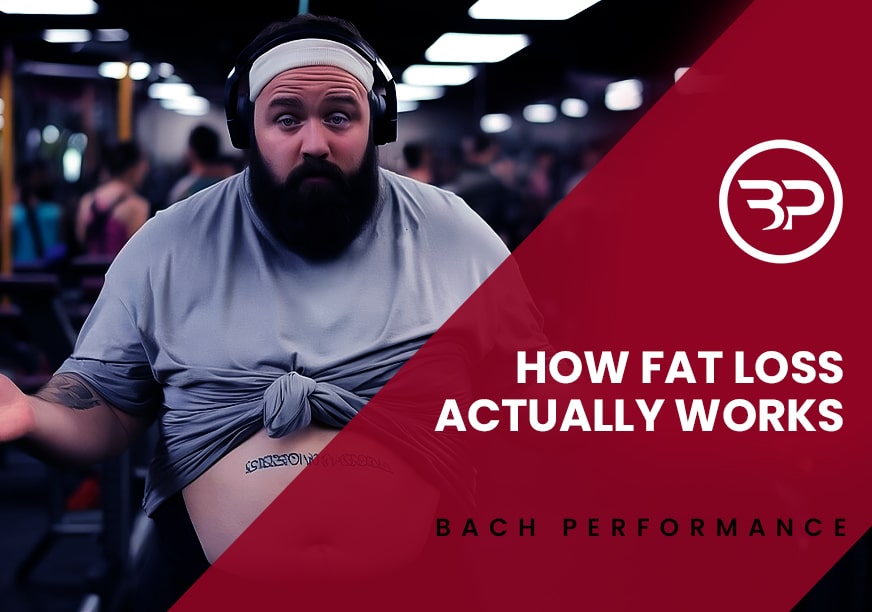Discover the Power of Complex Training
January 20, 2015
[A variation of this article was originally published on EliteFTS.com]
Here’s what you need to know:
1.Post-Activation Potentiation is the driving force behind the benefits of complex training.
2. Complex-pair training, when scheduled in appropriate training blocks, can improve power and rate of force development (RFD).
3.Complex training works best in trained, advanced level athletes. Unless you can move a decent amount of weight this isn’t for you. If this is you, stop watching Miley Cyrus twerkin’ it, go pick up heavy stuff, and raid the fridge.
Adding 5 pounds to the bar each workout might work when you’re a rookie, but not once you’ve earned your keep in the power rack.
Long term gains aren’t achieved solely by linear workouts. Soon, your linear periodization and s-medium T-shirts no longer get the job done.
You’ve hit the dreaded plateau.
Plateaus will occur in the weight room. Luckily, one strategy reigns supreme in helping you bust through your current levels of strength, power, and muscular development. The time has come to add strategically designed complex training to stimulate explosive growth and strength.
Enter complex-pair training, an advanced training strategy to add some spring to your static strength, new slabs of muscle, and develop a powerful physique.
This advanced strategy has an athlete perform a high-intensity strength training exercise followed by an explosive exercise that mimics the biomechanics of the strength training exercise, such as a deadlift and a broad jump.
The driving force behind complex training is a phenomena known as post-activation potentiation.
What Is Post-Activation Potentiation?
Post-activation potentiation, commonly abbreviated as “PAP” is a physiological adaption describing the immediately enhanced muscle force output of explosive movements after a heavy resistance exercise is performed (Robbins 2005). It is believed that the contractile history of a muscle influences the mechanical performance of subsequent muscle contractions.
Essentially, the nervous system becomes excited due to the heavy load from the previous exercise, causing in increased response in the subsequent explosive exercise (Rixon et al. 2007).
How PAP Works
Post-activation potentiation primarily occurs in type 2 fast twitch muscle fibers, so the advanced technique is best used to maximize performance of explosive based activities such as weightlifting, sprinting, jumping and throwing activities (2,6).
Luckily, type 2 muscle fibers are also the muscle fibers with the most potential for muscle growth.
*Note: This is awesome.
There are two proposed mechanisms for PAP. (Stay with me on this one, as the science gets a little heavy.)
1.) According to Hamada et. el (2000), there is an increased phosphorylation of myosin regulatory light chains during a maximum voluntary contraction (MVC). This allows the actin and myosin binding (for muscle contraction) to react to the increased calcium release. This reaction triggers a cascade of events leading to enhanced force muscle production at the structural level of muscle (Horwath & Kravitz ).
Thus, increased muscle activation yields a greater duration of calcium ions in the muscle cell environment, yielding a greater phosphorylation of the myosin light chain protein (Rixon et al. 2007).
Basically, the chemicals in your body that make your muscles contract get hyper sensitive and contract harder.
2.) The second theory is based on the H-reflex, an excitation of a spinal reflex elicited by afferent muscle nerves. It is theorized that the PAP intervention enhances the H-reflex, thus increasing the efficiency and rate of the nerve impulses to the muscle (Hodgson, Docherty, Robbins, 2005).
In other words, your nervous system get’s jacked up full go from a heavier exercise that matches the movement pattern of the unweighted movement, such as a power clean. When an explosive exercise such as a vertical jump is performance, the body is primed and ready to fire on all cylinders. As a result, the fully engaged nervous system powers up your jump to new heights.
The complex pair is then repeated for a number of sets. Over time, this improved neuromuscular efficiency improves the muscles ability to generate power.
It’s fun to be jacked, but the real bad-asses are jacked and explosive. You should have a little pop to go with your physique, not be as soft as melted butter.
Here are some common sample exercise pairings
Main Exercise: Explosive Movement:
Bench Press Clap Push Up, medicine ball chest pass
Shoulder Press Overhead medicine ball slam/ throw
Squat Jump squat, vertical jump, box jump
Deadlift Broad jump, kettlebell swing
Explosive Exercises For Complex Pairs
Considerations
Rest Periods
There is a balancing act between fatigue and PAP following a heavy strength movement. The key is finding a balance between the two, and I’ve found everyone to be different.
If the potentiation of the nervous system exceeds the level of fatigue, the explosive movement will be performed with more force and a higher rate of force development.
Bingo! Then we have both acute and long-term benefits of PAP.
But how long do we rest?
As it stands there is no uniform agreement about the optimal recovery required between the pre- load stimulus and subsequent muscle performance to gain optimal performance benefits (Macintosh et. al).
A comprehensive meta-analysis (Wilson et al) of Post Activation examined multiple variables, including rest periods and found both rest periods between 3-7 minutes and 7-10 minutes to yield significant power increases due to PAP, whereas longer time periods did not.
It’s important to note that the explosive exercise tested in many trials happened to be competitive sprint testing, rather than solely potentiating to bust through lifting plateaus.
As a Coach I must work within the time constraints of a typical session. For this reason, I keep rest periods anywhere from 1-3 minutes between high intensity resistance exercises and explosive exercises, with active rest and mobility exercises performed between. A 1-3 minute rest period allows for PAP training stimuli while promoting a higher workout density and sufficient training volume, both important variables.
(Contreras, Post-Activation Potentiation: Theory and Application)
Workload:
To develop power, training intensity must be high enough to produce a potentiation effect. Workloads between 70-95% have shown the greatest positive effects on subsequent explosive exercises, although loads above 80% 1-RM have appear to have the greatest potentiating effect(4,12). In explosive exercises that use resistance (if at all) stay light, under 10 lbs. This places focus on moving fast and speed development.
Sets/Volume:
Volume is a tricky when it comes to PAP. Too much and you risk fatigue and limited PAP response. Too little and there isn’t a large enough training response for your ambitious goals.
“So what do I do?”
Volume can be achieved in a few ways, by increasing the number of sets total, the reps in each set, or both. Gilbert and Lees (2005) found performing as few as one set, and up to five sets, of an exercise has been successful in eliciting potentiation.
Gullich and Schmidtbleicher (1996) found sets consisting of greater than five total repetitions or 5 seconds of total contraction time are not advisable because of the fatigue induced.
In most cases, I use 3-5 sets of 3 repetitions. Do 3 Sets if you’re shooting more for strength/power gains and 5 sets if you’re aiming for hypertrophy and more power endurance.
Complex Training Workout Program:
Complexes maximize workout efficiency by combining a strength movement with an explosive movement. By maximizing the rate of force development (RFD) you will blast past stubborn plateaus and reach uncharted levels of muscular development, power, and strength.
A Sample 6 Week Progression may look something like this:
| Week | Load | Sets/Reps(Strength Movement) | Sets/Reps(explosive) | Rest Between strength/ explosive movement |
| 1 | 80% | 5X4 | 5×4 | 60 s |
| 2 | 85% | 5X3 | 5×5 | 90s |
| 3 | 90% | 4X3 | 4×6 | 120s |
| 4 (back off) | 85% | 3X3 | 3×3 | 60s |
| 5 | 90% | 5X2 | 5×5 | 90-120s |
| 6 | 95% | 5X2 | 5×4 | 120-150s |
Monday: Movement Focus ⇒Squat Pattern
1a. Strength: Squat
1b. Mobility: Ankle/ Hip Mobilization
- Explosive: Countermovement Vertical Jump
Accessory Work: Vertical pulling, pressing, sled work
Tuesday: Movement Focus ⇒Horizontal Press
1a. Strength: Close Grip Bench Press
1b. Mobility: T-Spine Mobilization
1c. Explosive: Supine Medicine Ball Chest Pass
Accessory Work: Single leg, hinge pattern, weighted carries/ offset loading
Wednesday: Active Recovery/Off
Thursday: Movement Focus ⇒Hinge Pattern
1a. Strength:Deadlift
1b. Mobility: T-Spine/ Hip Mobilization
1c. Explosive: Broad Jump
Accessory Work: Horizontal Pulling, horizontal pressing, sled work
Friday:Movement Focus ⇒ Overhead Press Pattern/ Olympic Lift
1a. Strength: Split Jerk
1b. Mobility: T-Spine/ Hip Mobilization
- Explosive: Overhead Medicine Ball Press-Throw
Accessory Work: Squat Pattern, Single Leg, weighted carries/offset loading
Wrap Up:
Unleash the power of complex training to shatter your strength training plateaus. As Yuri Verkhoshansky described PAP “ Imagine lifting a half-full can of water that you thought was full.” In other words, your jumps will feel like jumping on a trampoline after an extra scoop of pre-workout powder in your shaker cup.
The combinations included are by no means an end-all, but it’s important to match the movement patterns of the strength exercise and the explosive exercise. I wouldn’t advise training this way for long bouts of time, but strategically planned complex cycles will add plates to the bar, new found power, and pack on new slabs of muscle.
References:
1.)Contreras, B. (Designer). (2010, 05 4). Post-Activation Potentiation: Theory and Application [Web Drawing]. Retrieved from http://bretcontreras.files.wordpress.com/2010/04/capture.jpg
2.)French DN, Kraemer WJ, Cooke CB. Changes in dynamic exercise performance following a sequence of preconditioning isometric muscle actions. J Strength Cond Res. 2003 Nov;17(4):678-85.
3.)Gilbert, G, and Lees, A. Changes in the force development characteristics of muscle following repeated maximum force and power exercise. Ergonomics 48: 1576–1584, 2005.
4.)Gullich AC and Schmidtbleicher D. MVC-induced short-term potentiation of explosive force. N Stud Athlete 11: 67-81, 1996.
5.)Hamada T, Sale DG, MacDougall JD, Tarnopolsky MA. Postactivation potentiation, fiber type, and twitch contraction time in human knee extensor muscles. J Appl Physiol. 2000 Jun;88(6):2131-7.
6.)Hilfiker R, Hübner K, Lorenz T, Marti B. Effects of drop jumps added to the warm-up of elite sport athletes with a high capacity for explosive force development. J Strength Cond Res. 2007 May;21(2):550-5.
7.)Horwath, R., & Kravitz , L. (n.d.). postactivation potentiation: A brief review. Informally published manuscript, Exercise Science , Retrieved from http://www.unm.edu/~lkravitz/Article folder/postactivationUNM.html
8.)Macintosh BR and Rassier DE. What is fatigue? Can J Appl Physiol 27: 42-55, 2002.
9.)McCann, MR and Flanagan, SP. McCann, MR and Flanagan, SP. The effects of exercise selection and rest interval on postactivation potentiation of vertical jump performance. J Strength Cond Res 24(5): 1285-1291, 2010
10. Rixon KP, Lamont HS, Bemben M. Influence of type of muscle contraction, gender, and lifting experience on postactivation potentiation performance. J Strength Cond Res. 2007; 21: 500–505.
11.)Robbins, D.W. Postactivation potentiation and its practical applicability: a brief review. J Strength Cond Res. 2005, 19(2): 453-458.
12.)Saez de Villarreal, E.S., Gonzalez-Badillo, J.J. & Izquierdo, M. (2007). Optimal warm-up stimuli of muscle activation to enhance short and long-term acute jumping performance. Eur J Appl Physiol, 100 (4), 393-401.








